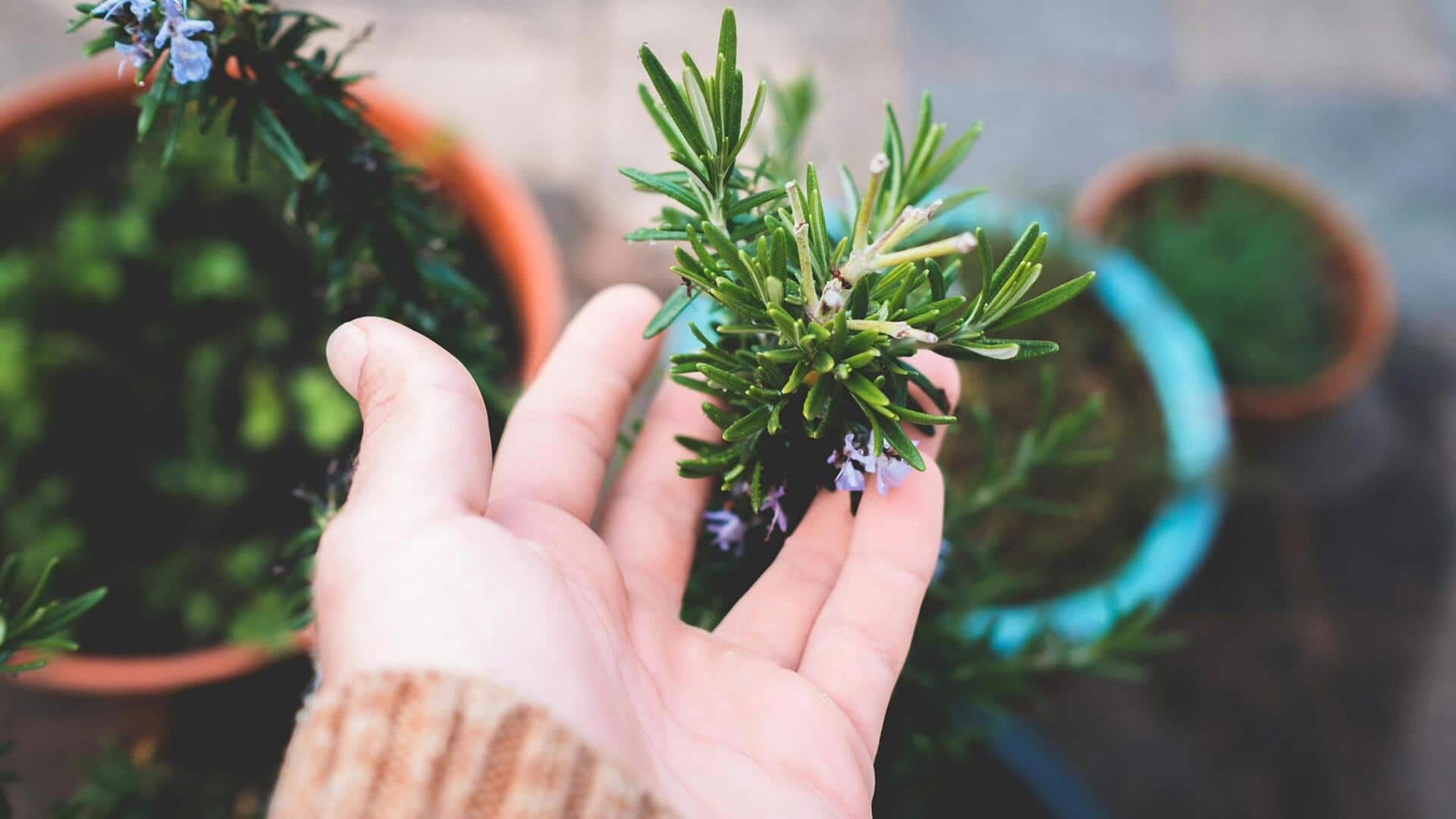
Secrets to growing lush rosemary right in your home
What's the story
Growing rosemary indoors can be a rewarding experience, providing you with fresh herbs for cooking and a delightful aroma. Rosemary is a hardy plant that thrives in well-drained soil and requires plenty of sunlight. With the right conditions and care, you can enjoy this herb year-round without much hassle. Here are some practical tips to help you successfully grow rosemary indoors, ensuring it remains healthy and vibrant.
Tip 1
Choosing the right pot and soil
Selecting the right pot is essential for growing rosemary indoors. Go for a pot with drainage holes to avoid waterlogging, which can damage the roots. A terracotta pot is perfect as it allows air to circulate through the walls. As for soil, use a well-draining mix, preferably one made for cacti or succulents, or mix regular potting soil with sand or perlite to improve drainage.
Tip 2
Providing adequate sunlight
Rosemary needs a lot of sunlight to thrive, so make sure it gets at least six hours of direct sunlight every day. Place your plant near a south-facing window where it can soak up all the light. If natural light is insufficient, you can use grow lights as an alternative to keep your rosemary healthy and growing.
Tip 3
Watering wisely
Overwatering is one of the most common mistakes when growing rosemary indoors. Water only when the top inch of soil feels dry to touch. When you do water, make sure it's thorough enough so that excess drains out from the bottom of the pot. This way, you can keep the roots from sitting in water and prevent root rot.
Tip 4
Pruning for health and growth
Regular pruning keeps your indoor rosemary plant healthy and encourages bushier growth. Trim back any woody stems or those that appear leggy every few weeks during the growing season (spring to early fall). Use clean scissors or pruning shears to avoid spreading diseases between plants.